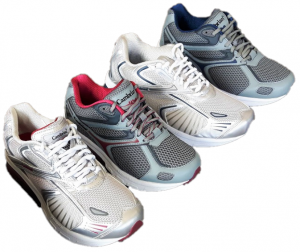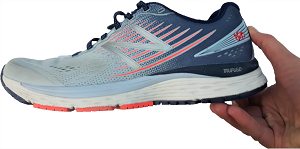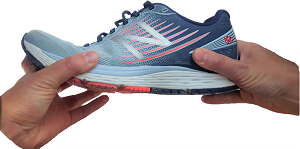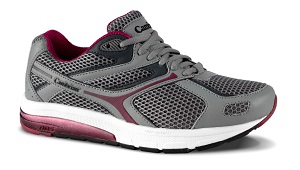
Orthopaedic Shoes
What are Orthopaedic Shoes?
Orthopaedic shoes contain features to aid with fit and function. These features may include a removeable insole, strong heel counter, stable midsole/base, a lace or Velcro closure, multiple width options and other specialty features. They optimize the best fit for the wearer, and provide support and additional features which may aid with pain and dysfunction when appropriate.
Orthopaedic Shoes vs Orthotics
An orthopaedic shoe is not the same as an orthotic device, but they compliment each other to provide support and comfort. Even the very best orthotic would not be as effective without the proper footwear. An orthotic device provides support in the form of arch support and correction. The orthopaedic shoes provide a stable and supportive base, and hold the foot in place to allow the orthotic device to work optimally.
Features
Removable Insole
The removeable insole helps accommodate a custom foot orthotic or an over the counter insert when necessary. Those who require an orthopaedic shoe may also benefit from a supportive insert.
Heel Counter and Stable Midsole
A strong heel counter and stable midsole/base are important to support and hold the foot in place.
The heel counter is the area that hugs the back of the heel with the function of controlling motion at the heel. It can be tested by pushing on that area on the outside of the shoe. A strong heel counter will not bend with the pressure of your thumb.

The midsole is the layer between the bottom of the shoe and under the insole. It provides shock absorption while contacting the ground, and cushioning when standing on a hard surface. A strong midsole helps to control motion at the midfoot (center of the foot), which helps with pronation (collapse in) control. To test the midsole, try to bend the shoe in half or twist the shoe through the middle. The middle of the shoe should not bend easily.

Lace or Velcro Closure
With a lace or Velcro closure, the shoe provides a better fit by accommodating the varying arches in the population. For those who deal with swelling in their feet, the shoe fit can be adjusted depending on the swelling severity for that day.
Multiple Widths
Everyone has different foot width and length combinations. With multiple widths to choose from, the proper fit, and therefore comfort, is easier to find. These widths typically range from AA to 2E, with regular widths considered B for women and D for men. Shoes that are too narrow for the feet may cause pain, callusing, and toe nail issues at the forefoot.
Most shoes you find in a store will be a regular width. When you increase or decrease your shoe length, the width will increase and decrease respectively. With that being said, those with wide or narrow feet tend to wear the improper length to fit the width.
Other Features
Not all feet fit comfortably into the typical features of an orthopaedic shoe. Other features that orthopaedic shoes may include are a rocker sole, stretch fabric for bunions or clawed toes, extra depth, or extra widths. These features are on additional shoes to accommodate different types of pain and deformities.
A rocker sole may be beneficial for those with pain at the ball of the foot, or who need assistance walking. The rocker sole rolls the foot forward, which takes pressure off the ball of the foot and aids in walking.

Certain shoes will offer additional widths to fit even wider feet, which could be from a severe bunion. These widths could range anywhere from 3E-6E.
What is the Difference Between Orthopaedic vs “Regular” Shoes?
Most shoes do not have all or most of the features that orthopaedic shoes have. The lack of widths available is the most common feature missing from a typical shoe. These shoes typically have a “regular” width, which can be difficult for people with wide feet. Other common features are the lack of support and the insert glued into the shoe. These make it difficult for those with an orthotic device.
Do I need Orthopaedic Shoes?
A few reasons why someone might require orthopaedic shoes are pain, issues finding shoes to fit, wide feet and those who wear orthotics.
In some cases, pain can be resolved or diminished from a properly fitting shoe with the proper support. This pain may be from shoe pressure or a lack of support leading to pain originating from the feet. Your shoes should not be causing you pain!
Proper fitting
Canadian Certified Pedorthists are trained to properly fit shoes and recommend features based on the foot, activities, pain and any additional relevant information. Because all feet, shoes and brands are different, each person may receive a different recommendation.
If you are unsure about orthopaedic shoes and what features you need, contact us for an appointment!

You must be logged in to post a comment.